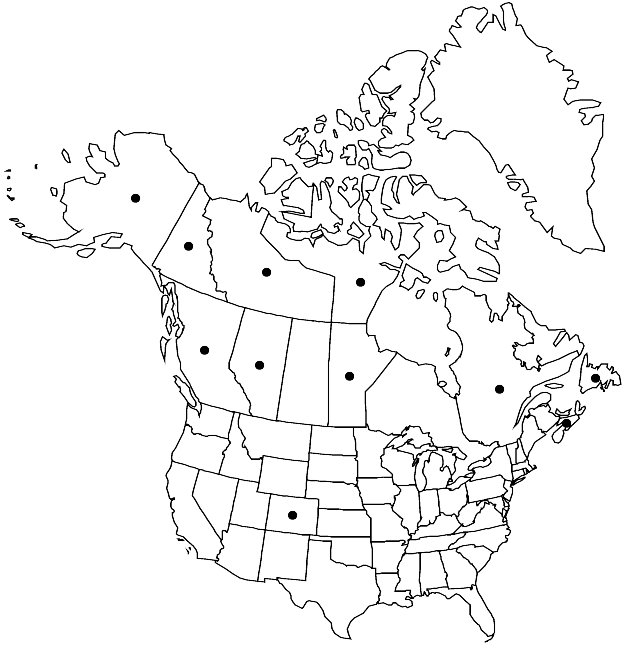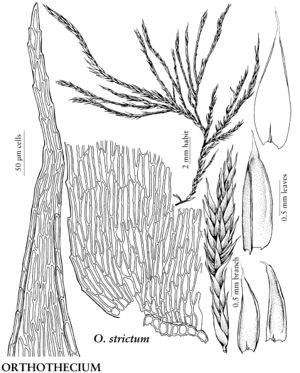Orthothecium strictum
Moosstudien, 122, plate 5, fig. D. 1864.
Plants small, in tufts, orange. Stems 1–6 cm, 0.5 mm wide, erect to ascending, sparingly branched. Leaves erect-imbricate, straight, ovate-lanceolate, not to slightly plicate, 1 mm; margins partially recurved, serrulate distally; apex short, flexuose, subhyaline; costa double, short; basal laminal cells shorter than medial cells, brownish yellow; medial cells oblong-linear, 48–64 × 8 µm. Specialized asexual reproduction rare, by clusters of propagula in leaf axils, claviform, multicellular. Sporophytes unknown.
Habitat: Moist tundra, humus, soil, rock ledges, crevices
Elevation: low to high elevations (10-2800 m)
Distribution

Alta., B.C., Man., Nfld. and Labr. (Nfld.), N.W.T., N.S., Nunavut, Que., Yukon, Alaska, Colo., Europe.
Discussion
Orthothecium strictum is distinguished by stems 0.5 mm wide and 1–6 cm long, and the indistinctly plicate, erect-imbricate, narrowly lanceolate leaves with revolute margins, ending in a short, flexuose, subhyaline acumination. The perichaetial leaves are ovate-lanceolate. A single collection (Alaska, Steere 18846, NY) had claviform multicellular propagula present in axils of leaves.
Selected References
None.
